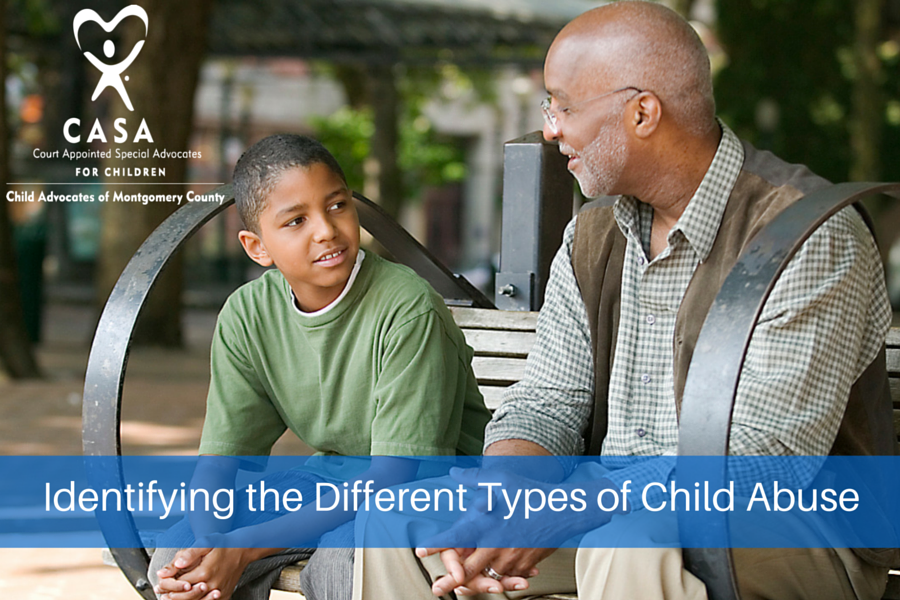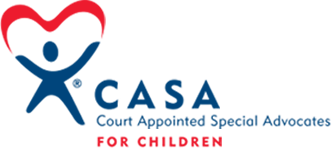Identifying the Different Types of Child Abuse

Today, 185 children will be maltreated in Texas. Last year, more than 65,000 cases of abuse and neglect were confirmed in Texas alone. One in four girls are sexually abused before their eighteenth birthday, and one in six boys suffer sexual abuse. Here we identify the four main types of child maltreatment with the hope of alerting and educating our readers of the different types of child abuse, the resulting symptoms, and the devastating lasting effects.
The four different main types of child abuse are physical abuse, emotional abuse, neglect, and sexual abuse.
Physical Abuse
Physical Abuse is the deliberate intention to inflict pain. When someone hears the term “child abuse”, they most commonly associate it with physical abuse. Wounds, bruises, burns, fractures, and sore muscles are signs of physical abuse, but abuse can also result from severe acts of discipline. Injuries that don’t coincide with the explanation and untreated medical or dental needs are also red flags for physical abuse.
Emotional Abuse
Behaviors toward the child that cause mental anguish are considered emotional abuse (also called psychological abuse). Examples of emotional abuse are shouting often at the child, withholding kindness or affection, extended periods of silence, and harsh jokes at the expense of the child. Calling the child names or making other demeaning remarks can be termed emotional abuse and usually results in low self-esteem. Children who have been emotionally abused may suffer from depression or desperately seek affection. Other symptoms include social withdrawal and delayed or inappropriate emotional development.
Neglect
Parents or caregivers who are continually unavailable for the child are considered neglectful. Even if the parent is physically present but unavailable or refuses to care for the child or meet his/her needs, neglect occurs. Imagine a young child left at home alone for extended periods of time with no food in the house and an infant sibling to care for—this would be an example of child neglect. The parent may have a substance abuse problem, mental illness, or be too consumed with a job or another person to properly care for the child. The warning signs for neglect include poor growth, weight loss or gain, poor hygiene, lack of appropriate clothing or supplies to meet their needs, stuffing themselves at one meal and hiding food for later, or stealing food or money. Neglect is the most common type of child abuse.
Sexual Abuse
Touching a child in a sexual manner, or having sexual relations with the child is sexual abuse and includes any behavior toward the child for sexual stimulation. This type of abuse is characterized by fondling, forced sexual acts, and indecent physical exposure. Whether the abuse occurs as an isolated incident or as repetitive conduct that continues for years, both types are considered sexual abuse of a child. Often, the perpetrators are the child’s relatives or people closest to the family – individuals who no one imagined would commit such deeds. These behaviors in a child can signal sexual abuse: knowledge or promotion of sexual behavior premature for his/her age; sudden difficulty with toilet habits in a young child; pain or itching, bruises or bleeding in the genital area. Other symptoms are trouble sitting or walking, blood in his/her underwear, and sexual abuse of other children.
Long Term Effects of Child Abuse
Lasting damage can be inflicted by all types of abuse. The effects of child abuse go far deeper than the physical marks left behind. The child may develop relationship issues and experience trust problems. Feelings of being worthless or low self-esteem issues are common, and the child may exhibit difficulty-controlling emotions.
CASA Child Advocates of Montgomery County works to help abused and neglected children who have been removed from their homes and placed in the foster care system. CASA volunteers serve as the “eyes and ears” for the judge in child welfare cases. This includes researching each child’s situation and making objective recommendations to help them reclaim their childhoods from abuse and neglect. CASA volunteers are frequently the only stable presence in these children’s lives as they navigate the foster care system.
These volunteers bring three critical qualities to their work: they focus on one case at a time; they bring a unique perspective to the court case; and their sole objective is representing the best interests of the child.
We are actively seeking kind hearts to fulfill this role. Contact us today to learn more about how to become a CASA Advocate and the difference an Advocate can make in a child’s life.
